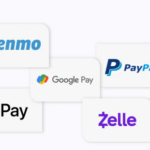About PHAME
PHAME is a fork of GMX protocol (v1) with its own customized design in governance token staking and LP token mechanism (interoperability).
It is essentially a decentralized and non-custodial perpetual exchange that emphasizes offering solutions for clear risk management, minimal transaction costs, and absolute transparency of users’ funds.
Traders can utilize cryptocurrencies like PLS, HEX, PLSX, and more, with leverage of up to 30x ~ 50x, all the while participating in revenue sharing if you choose to stake PHAME governance tokens.
A distinctive multi-asset pool supports trading and generates fees for LP’s (liquidity providers) through market making, swap fees, and leveraged trading.
PHAME Coin Price
| Coin Basic | Information |
|---|---|
| Coin Name | PHAME |
| Short Name | PHAME |
| Max Supply | N/A |
| Total Supply | 55,555,000 PHAME |
| Support | 24/7 |
| Official Project Website | Click Here To Visit Project Website |
PHAME Price Live Data
Tokenomics
$PHAME token
$PHAME is the platform’s utility and governance token. The goal of the tokenomics is to incentivise the protocol’s supporters and help long term growth of the community.
Staking
- Staked $PHAME will receive 40% of the platform fees from leverage tradings and borrowing fees.
- The fees are currently designed to be paid in the form of native tokens (i.e. the tokens that are actually traded & settled on the platform. On testnet app, they would be $HEX, $tPLS, $USDC and etc). This might change should the community demand so: for example native token fees can be partially converted into $PHAME.
- Rules of fee distribution:
- 1.If 100% of the tokens are staked, then 100% of the net fees will be distributed to the stakers, in the native currencies.
- 2.If x% of the tokens are not staked, then x% of the net fees will be distributed to the treasury address.
$PHLP Token
Users can provide liquidity to PHAME protocol and receive $PHLP in return as proof of their LP position.
- $PHLP effectively represents a basket of tokens used for swaps and tradings on the protocol. The basket includes stablecoins used for leverage short trading and non-stable tokens used for leverage long trading.
- $PHLP can be minted using any underlying token within the basket and redeemed to any underlying token too. $PHLP can also be properly transferred & traded, meaning it has true interoperability that can be built with other DeFi legos .
- Holding $PHLP acts similar to holding the basket of the underlying tokens as a portfolio, while earning fees from protocol but subject to impermanent loss.
- $PHLP holders will receive 60% of the protocol fees (leverage trading & borrowing fees)
- $PHLP holders make profit when leverage trader make a loss and vice versa.
Interoperability
One key new design of $PHLP as apposed to the forked GMX v1 $GLP is that $PHLP liquidity tokens are natively transferrable. Such design allows various more friendly use cases upon $PHLP that could improve capital efficiency, price discovery and ease of building more DeFi legos on PHAME protocols.
Risks
Caution should be exercised when interacting with any smart contract or blockchain application. While risks are attempted to be mitigated through testing, audits and bug bounties, there is always a risk of vulnerabilities in any smart contract code.
Fees & Others
Leverage Trading Fee
The fee for opening a position is 0.4% of the position size, and the same fee applies when closing the position (same as GMX v1).
The collateral of long positions is the token being longed, for PLS longs the collateral is PLS and for eHEX longs the collateral is eHEX, etc.
The collateral of shorts positions is any of the supported stablecoins e.g. wUSDC, wUSDT, wDAI, etc.
Execution Fee
There are two transactions involved in opening / closing / editing a position:
- User sends the first transaction to request open / close / deposit collateral / withdraw collateral
- Keepers observe the blockchain for these requests then execute them
The cost of the second transaction is displayed in the confirmation box as the “Execution Fee”. This network cost is paid to the blockchain network.
Borrowing Fee
There is a “Borrow Fee” that is deducted on an hourly basis. This fee represents the payment made to the counterparty of your trade. The exact fee per hour varies depending on the utilization and is calculated as (borrowed assets) / (total assets in the pool) * 0.01%. The “Borrow Fee” for both long and short positions is displayed below the swap box.
Slippage
While there are no price impacts for trades, there can be slippage due to price movements between when your trade transaction is submitted and when it is confirmed on the blockchain. Slippage is the difference between the expected price of the trade and the execution price, this can be customised in the “Settings” menu by clicking on the “…” icon at the top right of the page.
Additionally, all other fees will be transparently shown before a user executes a trade.
PHLP Fees
The fees for minting PHLP, burning PHLP, and performing swaps depend on whether the action increases or decreases the balance of assets in the index. If the index has a higher percentage of HEX and a lower percentage of USDC, actions that further increase the HEX amount will have higher fees, while actions that reduce the HEX amount will have lower fees.
You can view the token weights on the Dashboard. These weights are adjusted to hedge PHLP holders based on the positions taken by traders. If many traders are long on HEX, the token weight for HEX will be higher. Similarly, if many traders are short, stablecoins will have a higher token weight.
Decentralized Perpetual DEX
Connect your wallet & trade your favourite RH Ecosystem coins with up to 30x leverage.
Conclusion
Conclusion PHAME represents an important advancement in decentralized exchanges, building upon GMX Protocol v1 while adding its own set of features such as governance token staking mechanisms. At its core, PHAME is committed to offering a decentralized and non-custodial perpetual exchange that prioritizes key aspects of trading: clear risk management, minimal transaction costs and total transparency in regards to user funds.
Traders within the PHAME ecosystem have access to trading a variety of cryptocurrencies with significant leverage ranging from 30x to 50x. Furthermore, by staking PHAME governance tokens, users can actively take part in revenue sharing – creating an ecosystem in which traders as well as stakeholders alike can take advantage of its unique features and design.
FAQ
What is PHAME, and how does it differ from GMX protocol (v1)?
PHAME is a decentralized exchange that forked from the GMX protocol (v1) but has its unique design in governance token staking and LP token mechanisms. While GMX provided the foundation, PHAME introduces customized features aimed at improving governance, interoperability, and user benefits.
What makes PHAME a decentralized exchange (DEX)?
PHAME is considered a DEX because it operates without a central authority or custodial control. It allows users to trade cryptocurrencies directly from their wallets, ensuring control over their funds without the need for a third party.
What are the key features of PHAME that set it apart from other exchanges?
PHAME emphasizes clear risk management, minimal transaction costs, and complete transparency of user funds. It also offers governance token staking and LP token mechanisms for added benefits.
Can you explain governance token staking on PHAME?
Governance token staking on PHAME allows users to stake PHAME governance tokens. In return, they may receive rewards or benefits, such as revenue sharing or voting rights, depending on the platform’s governance structure.
What is the LP token mechanism and how does it work on PHAME?
The LP (Liquidity Provider) token mechanism enables users to provide liquidity to the exchange by depositing cryptocurrencies into liquidity pools. In return, they receive LP tokens representing their share of the pool. These LP tokens can be traded or staked for additional rewards.








